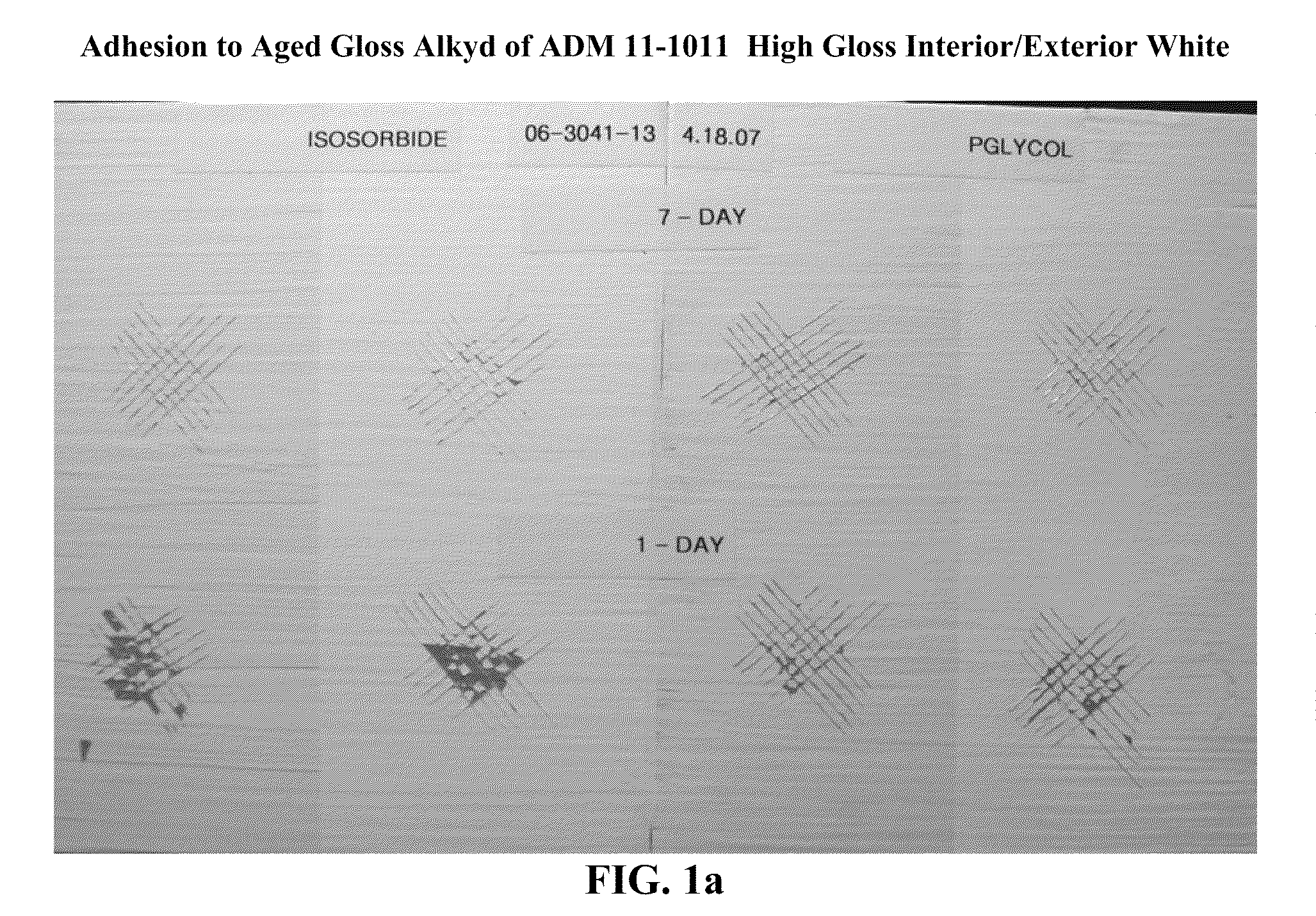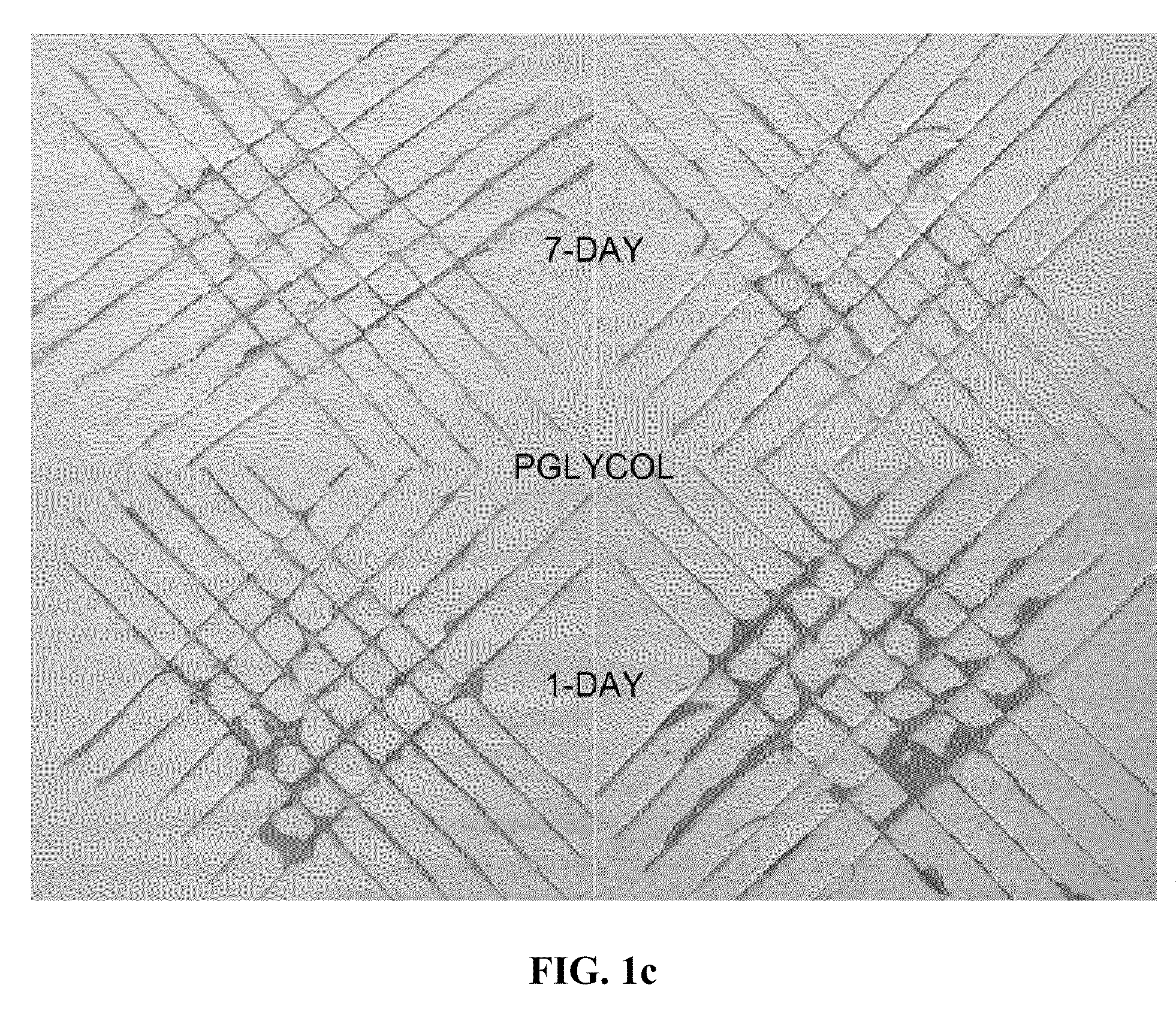Waterborne Film-Forming Compositions Containing Reactive Surfactants and/or Humectants
a technology of surfactants and water-based film, which is applied in the direction of thin material processing, synthetic resin layered products, transportation and packaging, etc., can solve the problems of compromising the end use function of paint films, significant reducing water resistance and durability of paint films, and high concentrations of voc's that are environmentally undesirable, so as to reduce the level of glycols, maintain open time, and control evaporation
- Summary
- Abstract
- Description
- Claims
- Application Information
AI Technical Summary
Benefits of technology
Problems solved by technology
Method used
Image
Examples
example 1
Synthesis of Conjugated Fatty Acid Methyl Esters
[0098]Highly reactive polyglycerol esters were synthesized from linear decaglycerol (Brose Chemical Company, Twin Falls, Id.) and fatty acid methyl esters of conjugated linseed oil (CLOFAME). Archer 1 (Archer-Daniels-Midland Co., Decatur, Ill.) is a commercially available CLOFAME.
[0099]Archer 1 (250 g), anhydrous methanol (200 mL, Aldrich) and sodium methoxide (1.5 g, Aldrich) were added to a 1000 mL round bottom flask and heated under reflux for 4 hours. The reaction mixture was then cooled to room temperature, poured into a separatory funnel, and allowed to separate into two layers. The lower glycerol and methanol layer was removed and the methyl ester layer was washed several times with hot water to remove fatty acids. The methyl ester layer was dried over anhydrous MgSO4 and filtered to give a clear amber liquid at room temperature.
example 2
Synthesis of Reactive Polyglycerol Esters
[0100]Linear decaglycerol (10.0 g, Brose Chemical Company, Twin Falls, Id.) and CLOFAME from Example 1 (40.0 g) were added to a 4-neck round bottom flask equipped with an overhead stirring apparatus, Barret style receiver, condenser. The two starting materials formed a biphasic system. The reaction mixture was heated to 160° C. under a nitrogen purge. At this temperature, anhydrous potassium carbonate (0.1 g) was added to the reaction. The reaction mixture was stirred for 4 hours at 165° C. with mechanical stirring and a strong nitrogen purge. The reaction was then cooled to room temperature and filtered. The resulting material was a clear, amber monophasic viscous liquid at room temperature, soluble in hexane and insoluble in water, indicating substantial esterification of polyglycerol.
example 3
Evaluation of Paint Formulations
[0101]The performance of paint formulations containing polyglycerol esters such as decaglycerol monooleate (MONO), hexaglycerol monosoyate and decaglycerol monosoyate were compared with various nonyl phenyl ethoxylate (NPE) surfactants. Three formulations shown below using NPE-based surfactants were replaced with Decaglycerol Monooleate (MONO) from Lonza (Basel, Switzerland) on a lb-lb basis. The MONO was diluted with 30% Propylene glycol for easy incorporation. Formulations I and II were evaluated with Archer RC™ while Formulation III was evaluated both with Archer RC™ and Texanol™ coalescents. Basic paint and film properties were evaluated with emphasis on water and alkali resistance and color acceptance test.
TABLE 3Types of Formulations TestedI.E-2252 Good Quality Exterior Flat for Masonry(DOW)Tergitol ™ NP-9II.E-2264 Exterior Semigloss (DOW)Triton ™ N-57III.SGI-102 Low VOC Interior Semigloss (AirProducts)Triton ™ CF-10
TABLE 4Formulation I.: E-2252...
PUM
| Property | Measurement | Unit |
|---|---|---|
| concentrations | aaaaa | aaaaa |
| aqueous | aaaaa | aaaaa |
| composition | aaaaa | aaaaa |
Abstract
Description
Claims
Application Information
 Login to View More
Login to View More - R&D
- Intellectual Property
- Life Sciences
- Materials
- Tech Scout
- Unparalleled Data Quality
- Higher Quality Content
- 60% Fewer Hallucinations
Browse by: Latest US Patents, China's latest patents, Technical Efficacy Thesaurus, Application Domain, Technology Topic, Popular Technical Reports.
© 2025 PatSnap. All rights reserved.Legal|Privacy policy|Modern Slavery Act Transparency Statement|Sitemap|About US| Contact US: help@patsnap.com



